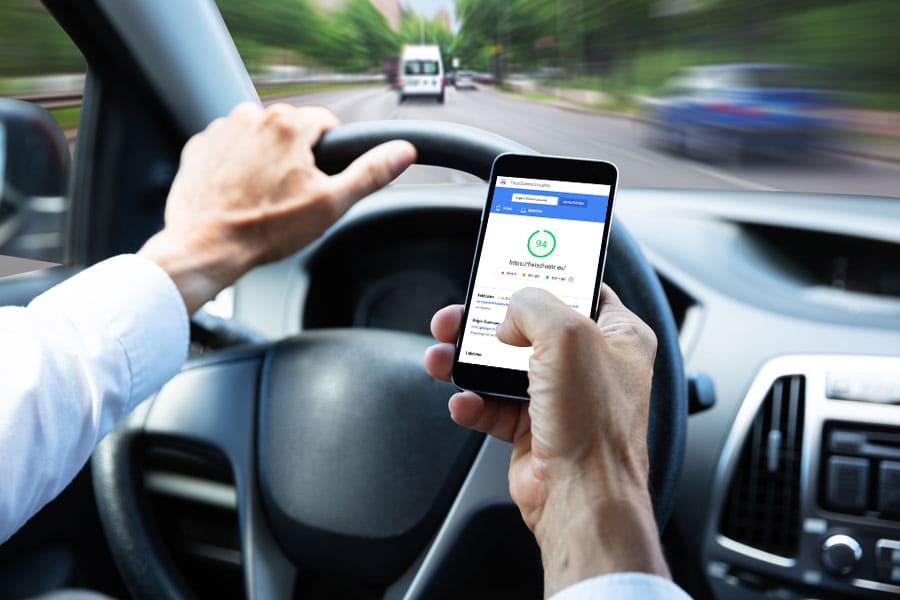How do I test my site speed?
For many, the first port of call for a page speed test is Google’s PageSpeed Insights. All you have to do is copy and paste your website’s URL into the form field – and the analysis can start. The website speed is very good if the analyzed value is in the green range between 90 and 100%. The tool also gives you some information about the problems and how to fix them.
You can also view the results in another Google tool:
https://search.google.com/test/mobile-friendly
In this post, we will go into the speed of your website.
What affects the loading time of my website?
1.) Bandwidth
The mobile network of most smartphone users is in most cases slower than a DSL connection at home.
2.) Computing power
If a user has very little RAM and the browser’s cache hasn’t been emptied for a long time, speed can suffer.
3.) File sizes
The smaller the website data file sizes, the faster the page loads. These files include, for example, images, videos, HTML code, scripts and style sheets.
4.) Web hosting server performance
The server processes the request for page views. The same applies here: the fewer files that have to be requested, the faster processing takes place. If there is a high influx of visitors, this can also have a negative impact on the main memory and processor performance of the web server. Under this link you can see how well the web hosting providers rank in a speed test:
https://www.experte.de/webhosting/performance
What can I watch out for so that I don’t negatively affect the speed?
Use of CSS & JS files
Style sheet files should always be included in the header area and javascript files in the footer area, if possible. CSS files are thus loaded first, so the design of the page is not affected during the loading process.
Minimize source code
To make the code smaller, unnecessary parts such as spaces or developer comments are simply removed. This saves space, the visitor’s device has to read less and the loading speed benefits.
Optimize images
An optimized image should be of high quality despite compression. In addition, the image size should be correct. If a product image on the website claims a size of 200×200 pixels, the uploaded image should not be 4000×3000 pixels. In this case, you can safely save yourself HD photos. To reduce and compress an image without expensive software, we recommend the iloveimg browser tool.
Merge CSS files
The more CSS files are included, the more requests the browser has to send to the web server. That takes time. Therefore, in the best case, only one CSS file should be integrated.
Technical jargon not understood?
For us as an internet agency, this is all understandable. But not everyone focuses so much on the technical implementation.
If this information is too complicated, we still have a solution – ideal for WordPress sites: the use of so-called caching plugins. There are many different ones on the market that you can simply install in your system and then set up according to instructions. Above all, we find WP-Rocket worth mentioning because it is easy to set up and efficient.
Do you need an internet agency to support you?
Maybe you don’t dare to approach the topic on your own or you just don’t have the time to familiarize yourself? Then get in touch with us without obligation. Together we will find a suitable solution for you!
